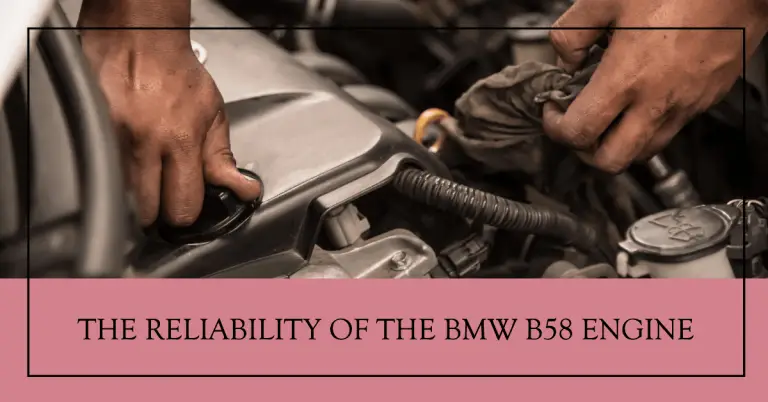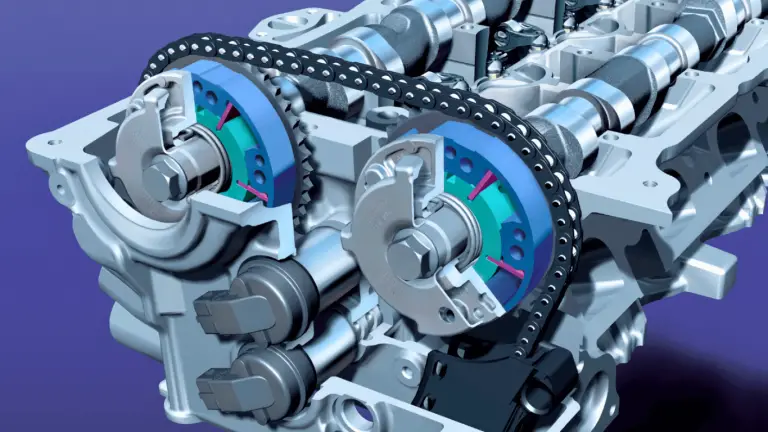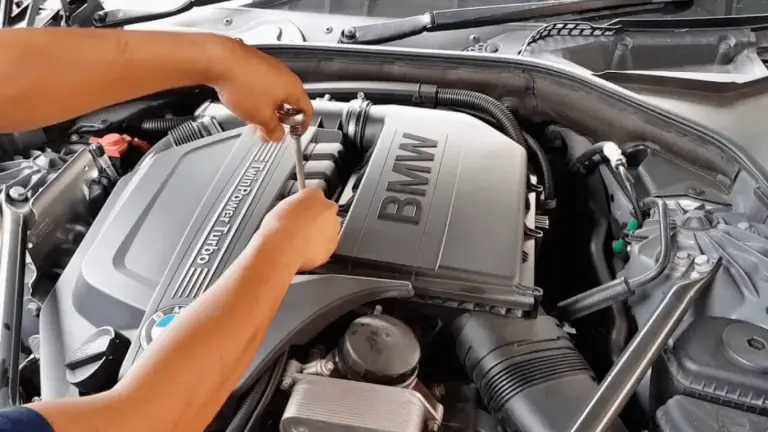BMW Water Pump Replacement Cost: What You Need to Know
Car repairs and maintenance can be expensive, especially for luxury vehicles like BMWs. One common repair that comes up is replacing the water pump, which circulates coolant through the engine. So what’s the typical cost to replace a BMW water pump? Expect to pay $450-$900 or more, depending on the model, shop rates, parts used, and your location. Replacing this critical engine component requires specialized tools and skills, so attempting a DIY on your BMW is only recommended for advanced auto enthusiasts.
In this detailed guide, we’ll cover everything related to replacing the water pump on a BMW:
- What the water pump does and why it’s important
- Average parts and labor costs for the repair
- Key factors that impact the total replacement cost
- Step-by-step overview of the replacement process
- Symptoms that indicate your BMW water pump is failing
- Tips to save money on water pump replacement
- Frequently asked questions about BMW water pumps
Gaining a better understanding of what’s involved and what to expect cost-wise will help you budget for this repair and avoid overpaying. Let’s dive in and explore BMW water pump replacement costs and procedures in more detail.
What Does the Water Pump Do in a BMW?
Before getting into the replacement cost, it helps to understand what the water pump does and why it’s an integral engine component.
The water pump is part of your BMW’s cooling system. It’s job is to continuously circulate engine coolant through the block and cylinder head to absorb heat and prevent overheating. The pump uses impellers and centrifugal force to efficiently push the coolant through the cooling system’s hoses and galleries.
Some key functions of the BMW water pump include:
- Maintaining proper coolant circulation and coolant pressure
- Transferring hot coolant from the engine to the radiator to dissipate heat
- Preventing coolant from boiling over and causing catastrophic engine damage
- Allowing the engine to maintain optimum operating temperature for performance and efficiency
If the water pump stops working, coolant flow will be disrupted and cause the engine to rapidly overheat. Driving with a bad water pump can lead to severe and extremely expensive engine damage. That’s why it’s so important to address water pump problems right away before the situation gets worse.
What’s the Average Cost for BMW Water Pump Replacement?
Now that you know what an integral role the water pump plays in engine operation, what does it cost to replace it?
The total bill for replacing a BMW water pump will generally fall in the $450 to $900 range, parts and labor included. However, the final cost can vary considerably based on these key factors:
BMW Model and Engine
Newer and higher-performance BMW models with more complex engines typically cost more for water pump replacement than an older base model. For example, replacing the pump on an M5 or M3 with a high output engine may cost $800 or more, while the same job on a 3 series sedan could be $600. Luxury models like 7 Series also command higher parts and labor rates.
Parts Cost
The water pump itself will cost $150-$300 or more from BMW. Opting for a new OEM BMW pump provides a quality part that meets the vehicle’s specifications, but comes at a premium price. Purchasing an aftermarket or remanufactured pump can save $50 or more on parts. Independent shops may offer more flexibility on parts used.
Labor Time and Shop Rates
Expect water pump replacement to take 3-6 hours for labor, billed at $100-$150 per hour by most shops. BMW dealerships often charge up to $200 per hour though, hiking the total labor expense. The pump’s location and accessibility also impact the time required.
Location and Repair Complexity
Some BMW models require more labor time and work to access the water pump, such as removing other engine components. Pumps located towards the rear of the engine or deeply buried can take much longer to replace. More complex, time-consuming jobs mean higher labor costs.
Your Location
Average repair costs are higher in areas with a higher cost of living. Big cities like New York and San Francisco will be more expensive than rural areas. Call shops in your region to get quotes based on local rates.
Getting quotes from several shops before you commit can help find the best price on your BMW water pump replacement. Now let’s look at what’s involved in the replacement process.
Step-by-Step BMW Water Pump Replacement
Replacing the water pump is not a quick or simple job, even for experienced auto technicians. It requires following a meticulous process with specialized tools.
Here are the basic steps involved in removing the old pump and installing a new one:
1. Drain the Coolant
The technician will begin by draining the coolant from the cooling system, catching it in a drain pan for reuse or recycling. This may involve removing the lower radiator hose or drain plugs. Getting all the coolant out is critical for installation.
2. Remove Accessories Blocking Pump
Depending on model, accessories like the fan shroud, radiator hoses, drive belts, and pulleys will need to be taken off to open access to the pump. Removing all obstructions provides the needed space.
3. Detach Pump Mounting and Hoses
With access cleared, the pump’s inlet and outlet hoses are detached from the ports using hose clamp pliers. Mounting bolts are removed so the pump is loose. Seals may get replaced.
4. Lift Out Old Pump
Now the old water pump can be gently maneuvered out through the cleared space. For tricky locations, a special extraction tool may be used to carefully pry it free without damage.
5. Install New Pump and Reattach Hoses
After cleaning the mating surface, the new pump gets put into position. Hoses get attached with new clamps, taking care to avoid twisting. Mounting bolts get torqued to spec.
6. Refill Coolant and Bleed System
With the new pump installed, new coolant (or reused) is poured back in and air is bled out. The system needs proper pressure and circulation restored.
7. Confirm Proper Operation
The technician will start the engine and monitor temperature gauges to confirm normal operating conditions. The system gets inspected for any leaks from loose connections.
As you can see, properly replacing a BMW water pump is a complex, meticulous process best left to a skilled professional. The good news is that this repair typically lasts years before needing to be repeated. Next let’s go over how to recognize when your water pump is failing.
Symptoms of a Failing BMW Water Pump
Catching water pump problems early allows for repair before permanent engine damage occurs. Here are four common signs of a bad water pump on a BMW:
1. Coolant Leaks
Weeping or dripping coolant from the water pump housing seam is a telltale symptom. The pump’s seal eventually wears out and allows pressurized coolant to escape. Watch for growing puddles under the car and low coolant levels.
2. Engine Overheating
Without proper coolant circulation, your BMW’s engine can start to overheat. Gauge readings above normal, hot air from vents, and warning lights point to overheating issues.
3. Unusual Noise From Pump
As internal bearings fail, they can make squealing, squeaking or grinding noises. Listen for sounds from the pump area with the engine on.
4. Visible Coolant Spray
If the leak becomes severe enough, you may see a visible spray or stream of green coolant coming from the water pump housing or connections. This requires immediate repair before major damage occurs.
If you notice any of the above symptoms, have your BMW’s water pump inspected right away. Now let’s go over some ways to save money on this repair.
Tips to Save on BMW Water Pump Replacement Cost
While the replacement cost can’t be avoided, here are some tips to help control expenses:
- Use a reputable independent shop – Skip the high hourly dealer rates and use a specialist shop that works on BMWs. They’ll have lower labor rates and more flexibility on parts used.
- Ask about remanufactured or aftermarket pumps – For less expensive options, ask if they can install a remanufactured or aftermarket replacement pump. Provides large savings over OEM.
- Get quotes from several shops – Price shopping for the best deal among 4-5 shops can save hundreds of dollars in labor time differences and parts markup.
- Consider DIY replacement – If you have advanced mechanical skills and tools, doing it yourself following the BMW service manual could save big on labor. Not recommended for most.
- Use discounts and coupons – Take advantage of any current promotions or discounts offered by shops to reduce the total bill.
- Time when work is slower – Avoid peak times when labor rates may be higher. Have the work done when business is slower.
Being smart about where you go for the repair and asking questions upfront can potentially reduce your overall expense for this BMW maintenance.
Key Questions About BMW Water Pump Replacement
We’ve covered a lot of ground discussing BMW water pump replacement. Here are direct answers to some other common questions drivers have about this repair:
How Often Should the Water Pump Be Replaced?
For most BMW models, the recommended interval is 60,000 to 90,000 miles. Check your owner’s manual maintenance schedule. Higher performance models and severe use may need earlier replacement.
Is it Safe to Drive with a Bad BMW Water Pump?
No, absolutely not safe to drive once you suspect the water pump is failing. Loss of coolant circulation can lead to catastrophic overheating and extreme engine damage. Have it towed to the shop.
Can I Replace the BMW Water Pump Myself?
While not easy for a non-professional, you can replace the pump yourself if you have solid mechanical ability, BMW repair knowledge, tools, and a factory service manual. For advanced DIYers only.
Protect Your BMW Engine with Proper Maintenance
Your BMW’s water pump is just one of many components critical to proper operation and longevity. Follow the manufacturer’s recommended maintenance schedule and watch for signs of problems between services. Identifying issues early, before damage occurs, will help your luxury vehicle stay on the road in peak condition for many more miles.







